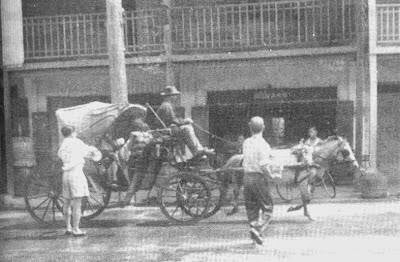Last week I blogged about learn to read and write
Thai. That got me thinking about the
whole process of learning a new language and how it affects the brain. So this week I am writing about the effects
of second language learning on brain structure and function.
When I was young (lo, these many moons ago) we were
told that the brain stopped growing by around fourteen or fifteen and pretty
much didn’t change after that, except by disease, accident, or the decline of
aging. We were also told that no new brain
cells were formed after that time. Now
we have learned that the brain is much more plastic and malleable, that
lifetime learning changes the brain, both physically and in terms of function.
First let’s look at the physical changes to the
brain from learning a second language.
In a Swedish study at Umeå University of military recruits studying
Arabic, Russian or Dari, MRI scans showed that specific parts of the brain
associated with language learning became larger after 13 months of study. Specifically, the hippocampus and superior
temporal gyrus grew larger. (I used to
think that the hippocampus was where undergraduate hippopotami hung out at the
uni, but I recently learned that it is brain region smack dab in the middle of
the medial temporal lobe.) Also, students
who learned more quickly showed greater changes in growth of these brain
structures.
Furthermore, a McGill University study of people who
learned a second language as adults showed that their left inferior frontal
cortex became thicker, indicating an increase in neurons and their associated
blood vessels in that region.
OK, so what does it mean when certain areas of the
brain grow in response to learning a second language? When you exercise the brain by learning a
language you are increasing the connectivity of the brain. You also grow new neurons (in the hippocampus
at least). In other words, neurons are
forming new connections which integrate the brain network. A better integrated brain transfers information
more quickly, is more flexible, and is more efficient at learning. (From a Penn State University study by Lee,
et al.)
The payoff comes not only from knowing a second
language, but from being a smarter and more flexible thinker in all areas. And even more importantly whether you learned
a second language as a child, or later as an adult the improvements in brain
function last throughout life. Dr.
Thomas Bak from the University of Edinburgh compared Edinburgh born individuals
at age 11 and again in their sixties and seventies. They had been given IQ tests at age 11. He retested them over forty years later. Those who spoke two or more languages had
significantly better cognitive abilities compared to their baseline testing at
age 11 than their monolingual peers.
Dr. Bak and his Indian colleagues in Hyderabad India
studied adults of an average age of 66 who had developed Alzheimer’s disease or
another form of dementia. Those who
spoke two or more languages developed dementia four years later than those who
were monolingual. That is an exciting
outcome. It seems that bulking up your
brain connectivity early on gives you an edge when neurons start to die in
older life. One interesting note was
that the effect was the same in literate and illiterate subjects. This indicates that the protective effect
arises from learning to speak and listen to a second language, not reading and
writing. So my reading and writing
course doesn’t directly help me, but as they increase my speaking and listening
skills, it does help my brain.
A 2011 Canadian study echoed the findings of the
Indian study. They found that bilingual
Canadians developed Alzheimer’s symptoms four to five years later than
monolingual Canadians. Now, it’s
probably best not to generalize anything from a study involving Canadians, but
it is suggestive.
I can tell you from experience that living in a
foreign country for many years changes you.
It gives you a new perspective and causes you to questions assumptions
that you had been totally unaware of.
You become to some degree a different person. Not necessarily a better or worse person, but
certainly a different one. Learning a
second language accentuates that process.
You actually have to learn to think a new way. I always tell my students, “Anything that can
be said in your language can be translated into any other language.” That is true but the way you go about
reaching a certain thought or idea is very different in different languages.
Beyond the immediate practicality and pleasure of
learning a second language there are other less obvious benefits. You become a more flexible and quicker
thinker. Your language abilities in your
native language improve. And because of
improved connectivity and efficient functioning of your brain network, you will
remain sharper in older life, and you may delay the onset of mental decline by
several years. That is a serendipitous
outcome of learning that I would be quite willing to accept.
I think after thinking this over, I’m going to have
to raise my rates. Not only am I a
teacher of English as a Second Language, I am a cognitive coach, and medical
practitioner, warding off the effects of aging on the brain. Just by changing my job title I should be
able to double my income!















